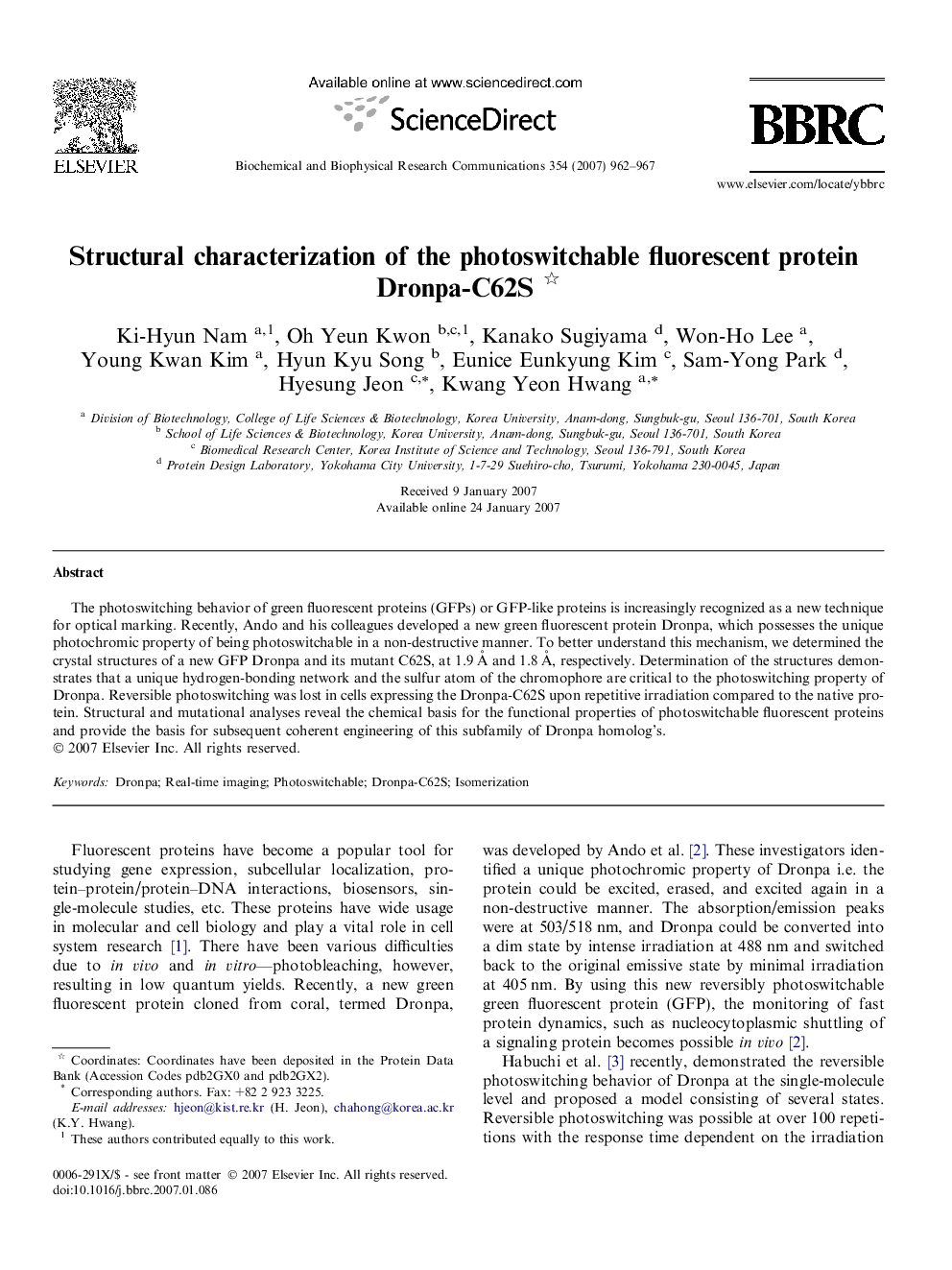| Article ID | Journal | Published Year | Pages | File Type |
|---|---|---|---|---|
| 10767505 | Biochemical and Biophysical Research Communications | 2007 | 6 Pages |
Abstract
The photoswitching behavior of green fluorescent proteins (GFPs) or GFP-like proteins is increasingly recognized as a new technique for optical marking. Recently, Ando and his colleagues developed a new green fluorescent protein Dronpa, which possesses the unique photochromic property of being photoswitchable in a non-destructive manner. To better understand this mechanism, we determined the crystal structures of a new GFP Dronpa and its mutant C62S, at 1.9Â Ã
and 1.8Â Ã
, respectively. Determination of the structures demonstrates that a unique hydrogen-bonding network and the sulfur atom of the chromophore are critical to the photoswitching property of Dronpa. Reversible photoswitching was lost in cells expressing the Dronpa-C62S upon repetitive irradiation compared to the native protein. Structural and mutational analyses reveal the chemical basis for the functional properties of photoswitchable fluorescent proteins and provide the basis for subsequent coherent engineering of this subfamily of Dronpa homolog's.
Related Topics
Life Sciences
Biochemistry, Genetics and Molecular Biology
Biochemistry
Authors
Ki-Hyun Nam, Oh Yeun Kwon, Kanako Sugiyama, Won-Ho Lee, Young Kwan Kim, Hyun Kyu Song, Eunice Eunkyung Kim, Sam-Yong Park, Hyesung Jeon, Kwang Yeon Hwang,
